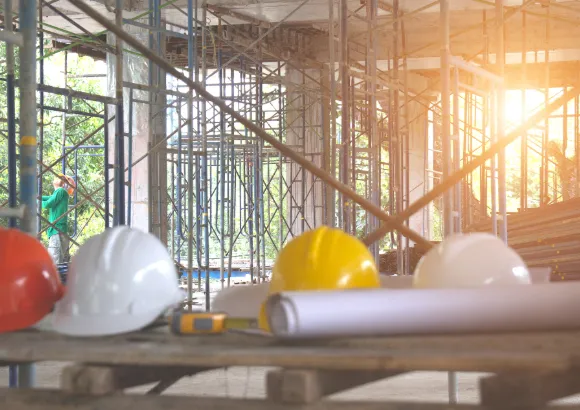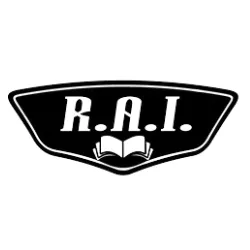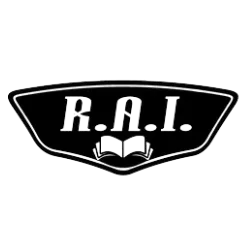Blog!
Learn about our industry

Difference Between OSHA 10 & OSHA 30
What Is the Difference Between OSHA 10 & OSHA 30?
Those looking to work in certain industries will need to get a "DOL card" before they can start. The Department of Labor (DOL) issues these wallet cards to anyone who completes OSHA Outreach Training. Exactly which course you need can get confusing, though. You'll see similar titles such as OSHA 10 or 0SHA 30 and labels like "10-Hour Construction" and "30-Hour General Industry."
While all of these courses serve the purpose of enhancing safety awareness and compliance in the workplace, they cater to different needs and requirements. Let's delve deeper into understanding the disparity between OSHA 10 and OSHA 30 training programs.
WHAT ARE OSHA 10 AND OSHA 30 COURSES?
OSHA 10 and OSHA 30 courses are training programs developed by the Occupational Safety and Health Administration (OSHA), a federal agency under the United States Department of Labor. These courses aim to educate workers and supervisors about occupational safety and health standards, regulations, and best practices to promote safer workplaces across various industries.
OSHA 10 and OSHA 30 are collectively called OSHA Outreach courses. OSHA develops the curriculum for its Outreach courses to serve as a type of standardized safety training that employers and regulators can use as a clear-cut minimum.
Each "industry," as defined by OSHA, has its own version of the Outreach curriculum – specifically, General Industry, Construction, and three subsets of Maritime work.
Each industry has two different course levels. The 10-hour Outreach curriculum is known as OSHA 10, and the 30-hour Outreach curriculum is known as OSHA 30.
WHAT'S THE DIFFERENCE BETWEEN OSHA 10 AND OSHA 30?
The main difference between OSHA 10 and OSHA 30 is the length of the course. The 10 and 30 refers to the duration of the training in hours.
Obviously, the 30-hour course is a much more extensive course than the 10-hour one. That's because OSHA 30 is for supervisor-level personnel. Supervisors need to understand the hazards and safety standards that apply to all the workers they oversee, and they also need to understand how to manage and enforce site safety.
WHAT'S COVERED IN THE OSHA 10 CONSTRUCTION COURSE?
The curriculum for individual OSHA Outreach courses will vary from provider to provider. OSHA sets up a framework for each industry and course level. Providers are required to cover a few mandatory topics and choose a certain number of topics from a list of electives.
For an OSHA 10 Construction course, OSHA requires all providers to teach:
Introduction to OSHA
Focus Four Hazards
PPE & Lifesaving Equipment
Health Hazards in Construction
Our 10-hour Construction course also includes the following elective topics:
Stairways and Ladders
Cranes, Derricks, Hoists, Elevators, and Conveyors
Excavations
Materials Handling, Storage, Use & Disposal
Scaffolds
Hand and Power Tools
Games in the new and improved version of our OSHA 10 Construction course include:
Hazard a Guess. You'll be presented with various construction scenarios and challenged to identify the safety and health hazards present.
Know Your PPE. You're assigned a specific task and must quickly select the required personal protective equipment.
Stairs and Ladders. You'll play four micro-games to learn about ladder safety.
The Signs. Match hazard signage with the correct meaning.
WHAT DOES OSHA 30 ALLOW YOU TO DO?
OSHA 30 covers all the same topics as OSHA 10 but is more in-depth. For supervisors in fields like construction, manufacturing, factory operations, and healthcare, the training covers mandatory topics such as inspections and hazard control.
However, most of the time difference is spent on new topics.
Supervisors and workers need to understand responsibilities and processes, so OSHA supervisor training has one extra mandatory topic called Managing Safety and Health.
Supervisors also need to know about a greater variety of safety topics, so most of the additional time is spent learning about OSHA standards for more specialized work.
In our OSHA 30 construction course, these additional topics include:
Concrete and Masonry Construction
Confined Spaces
Ergonomics
Fire Protection and Prevention
Safety and Health Programs
Welding and Cutting
Silica Exposure
Lead Exposure
Asbestos Exposure
Motor Vehicles, Mechanized Equipment, and Marine Operations; Rollover Protective Structures and Overhead Protection; and Signs, Signals and Barricades
Games in the new and improved version of our OSHA 30 Construction course include:
Confined Spaces. Correctly identify the type of confined space that you're shown.
Excavations. Spot the risks you need to account for while creating an effective excavation protective system.
All About SDS. Match hazard labels with safety data sheet information before the time runs out.
OSHA 10-Hour Training covers job-related health and safety hazards for entry-level workers. It provides awareness of potential dangers and how to avoid, prevent, or mitigate them.
WHO SHOULD TAKE IT?
If your job requires OSHA Outreach training and you DON'T have supervisory responsibilities, take OSHA 10-Hour. Some states and locations specifically require training courses for certain professions. Even when that's not the case, employers in high-risk industries often require it because it provides a consistent foundation for safety training. Those industries include (but aren't limited to) construction, manufacturing, warehousing, and maritime. If you're not sure whether you need OSHA 10-Hour training, ask your employer. Or you can check for state or local laws requiring Occupational Safety and Health Administration training or a DOL card.
BENEFITS OF OSHA TRAINING?
There are many benefits to taking OSHA training, both for individual workers and employers. They include:
For individual workers:
Increased safety awareness and knowledge: OSHA training equips workers with the knowledge and skills to identify, understand, and avoid workplace hazards. This can significantly reduce the risk of accidents, injuries, and illnesses.
Improved job performance and productivity: By understanding safety protocols and best practices, workers can perform their jobs more efficiently and effectively, minimizing disruptions and delays caused by accidents.
Enhanced career opportunities: OSHA training can be a valuable asset on your resume, demonstrating your commitment to safety and potentially opening doors to new career opportunities in various industries.
Peace of mind: Knowing you have the necessary safety training can provide peace of mind and reduce stress on the job.
For employers:
Reduced workplace accidents and injuries: A well-trained workforce is less likely to be involved in accidents, leading to significant cost savings for employers in terms of workers' compensation claims, medical bills, and lost productivity.
Improved compliance with OSHA regulations: OSHA training helps employers comply with safety regulations, reducing the risk of fines and penalties.
Enhanced company culture: A strong safety culture fostered by OSHA training can improve employee morale, engagement, and loyalty.
Increased productivity: By minimizing disruptions caused by accidents and promoting a safer work environment, OSHA training can contribute to overall business productivity.
Reduced insurance costs: Some insurance companies may offer lower premiums to businesses with demonstrably strong safety records, further enhancing the financial benefits of OSHA training.
HOW LONG IS THE TRAINING PROGRAM?
The Occupational Safety and Health Administration requires 10 hours of "student contact" time to cover course content. But the total number of hours you'll spend on training will vary. Break time, testing time, and commute time are extra. Some training methods, like online courses, allow students to take longer than 10 hours with the course material if they need it. OSHA limits training to a maximum of 7.5 student contact hours a day, with at least 8 hours between long sessions. That means the 10-hour course has to be spread over at least 2 days. Trainers can choose to spread them out further.
WHAT TOPICS ARE COVERED?
Each "industry" outreach program (Construction, Maritime, and the catchall General Industry) has its own set of topic requirements. But in all cases, there are:
Mandatory Topics: 6-7 of the 10 hours go towards topics chosen and required by the Occupational Safety and Health Administration. The exact subjects vary by program. They all require an Introduction to OSHA, where students learn about worker rights and employer responsibilities. The rest are essential safety topics. OSHA sets a minimum number of hours for each.
Elective Topics: OSHA provides a list of specific industry procedures, and course designers choose which topics are most relevant for their students. At least half an hour has to be devoted to each topic.
Optional Topics: Guidelines leave a couple of hours that can be used to cover unspecified safety topics, choose additional electives, or devote more time to a topic beyond its mandatory minimum.
This setup gives the courses a degree of consistency while allowing trainers the flexibility they need to tailor the course to their students.
HOW DO YOU PASS OSHA 10 OR 30 TRAINING?
You must attend and complete 10 or 30 hours of content review. And while OSHA doesn't require any kind of testing, many providers use an exam to confirm that you've learned the material. In those cases, a passing grade is required (however the instructor defines it). For example, our Outreach courses require you to correctly answer 70% of multiple-choice questions.
DO YOU NEED BOTH OSHA 10 AND 30?
No, but over the course of your career, you may need to take each, as OSHA 10-Hour isn't a prerequisite for OSHA 30-Hour. If you take a 10-Hour course and then discover you need a 30-Hour card, you would need to take a 30-Hour course separately. The original hours on the 10-Hour course could not be counted towards your 30-Hour course.
DOL CARDS AND CERTIFICATIONS
Once you've passed your Outreach course, you'll get two documents:
Wallet or DOL Cards (Department of Labor cards) are only available through authorized providers after you complete one of the Outreach Training courses we've discussed. Your card will be mailed to you after the course. Since 2016, these cards have been made of durable plastic, so you can carry them with you to show employers or inspectors.
Certificates are issued immediately and act as proof that you completed the course before your wallet card arrives. Employers need to provide records of training to OSHA, so they might need a copy. You'll get one of these for any OSHA course, not just the Outreach courses. For example, if you take a separate Sit-Down Forklift training, you'll get a certificate for everyone's records.
ENROLL IN OUR NEW, GAMIFIED OSHA 10 OR 30 COURSES TODAY!
Recently, we launched a new and improved version of our OSHA Outreach courses for Construction.
Our OSHA 10 and OSHA 30 Construction classes are now faster, more mobile-friendly, and more interactive with games and activities to increase your understanding and retention of the material. The time will fly by with fun games and a rich media experience.
It's not just our courses that have gotten faster. Your DOL card will now arrive in just 2 weeks!

FOLLOW US:
OFFICE NUMBER
EMAIL US:
